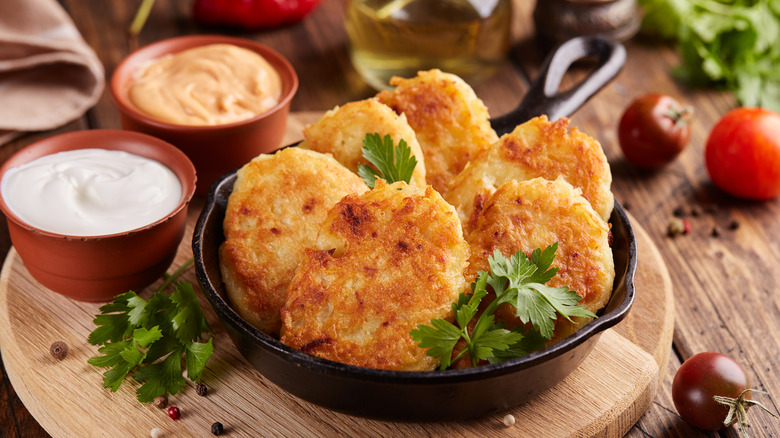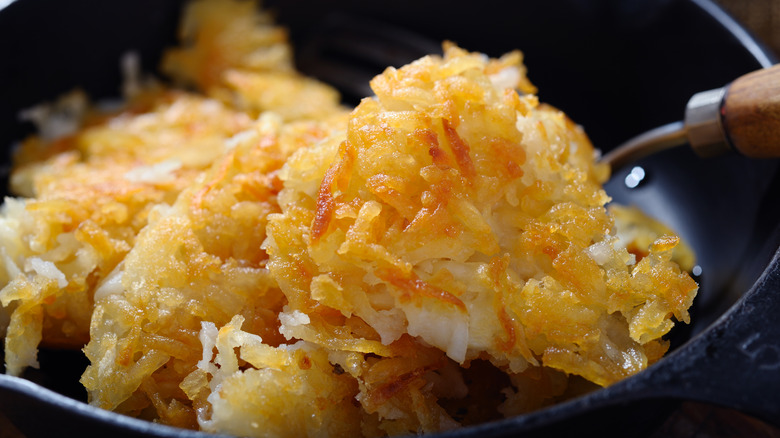For Ultra-Crispy Hash Browns, You Just Need To Wait
For amateur home cooks to seasoned chefs alike, frying up the perfect hash brown is a culinary milestone. Golden, greasy, and irresistibly savory, they're the highlight of any breakfast spread. But achieving the ideal crunch isn't as simple as it seems, and there are several mistakes that can get in the way. One of the most common? Flipping your hash browns too early. To understand why timing matters, Food Republic consulted Aleka Shunk, founder of Aleka's Get Together.
"Potatoes have a lot of water in them, so when they are flipped too early, you're not giving them a chance to sear properly," Shunk explained. In fact, potatoes are about 79% water, though the exact percentage varies by variety. "You want the moisture to evaporate on the exterior so the potatoes can sear properly and become nice and crispy," she added.
Allowing moisture to evaporate is a key component of triggering the Maillard reaction, a chemical process between amino acids and reducing sugars that occurs when food is exposed to high heat. This reaction is responsible for the golden-brown crust and development of rich, savory flavors. However, if there's still too much water in the potatoes, the surface temperature won't get hot enough for the reaction to occur. Instead, the water turns to steam, which results in soggy, mushy hash browns. And this isn't just specific to them — flipping any seared food too early can sabotage proper browning. So for the crispiest hash browns, timing is key.
How to tell when it's time to flip your hash browns
Although it seems logical to rely on a timer to tell you when to flip your hash browns, this common error is one of several mistakes everyone makes with hash browns that prevent them from reaching their full potential. Aleka Shunk explains, "There are no timing guidelines for when to flip hash browns since ... [it] depends on the heat and thickness" of your spuds. No two hash browns are exactly alike, and several factors affect how quickly they brown.
One key factor is the type of potatoes you use. For crunchy, golden hash browns, high-starch, low-moisture Russet potatoes are ideal. They crisp up much faster than low-starch, high-moisture varieties like waxy potatoes, which we don't recommend for this dish. The shape and size of your hash browns also play a role. Whether you're making shredded, diced, or patty-style hash browns, differences in thickness and size will affect how long they take to brown.
So instead of relying on a timer, just use your eyes. "You will be able to see a brown crust begin to form on the bottom (kind of like you see when you're cooking pancakes)! When you start to see the crust form, you can start to scrape the bottom to check for color. When they are a golden brown, you can flip," Shunk told us. This method gives you more control during cooking, and with some practice, spotting signs of perfect crispness will become second nature.


